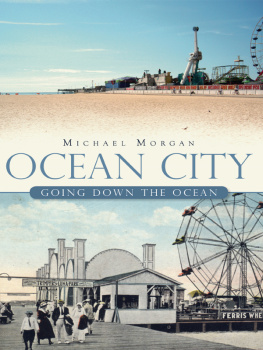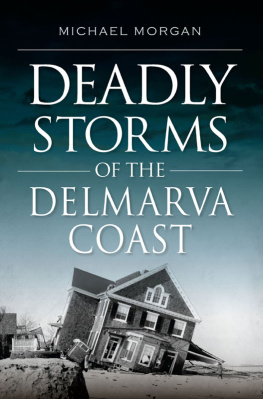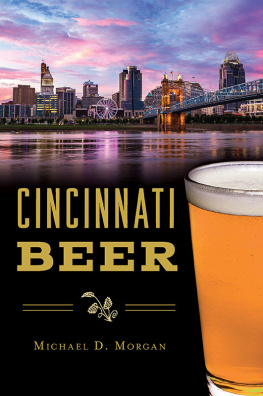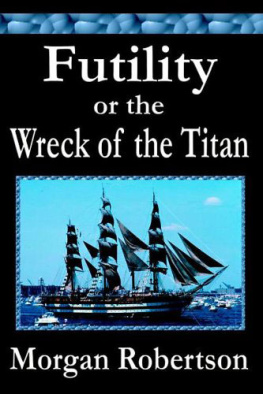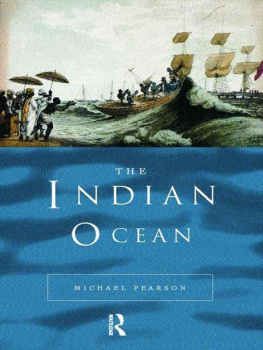Michael Morgan - Ocean City
Here you can read online Michael Morgan - Ocean City full text of the book (entire story) in english for free. Download pdf and epub, get meaning, cover and reviews about this ebook. year: 2013, publisher: Arcadia Publishing Inc., genre: Romance novel. Description of the work, (preface) as well as reviews are available. Best literature library LitArk.com created for fans of good reading and offers a wide selection of genres:
Romance novel
Science fiction
Adventure
Detective
Science
History
Home and family
Prose
Art
Politics
Computer
Non-fiction
Religion
Business
Children
Humor
Choose a favorite category and find really read worthwhile books. Enjoy immersion in the world of imagination, feel the emotions of the characters or learn something new for yourself, make an fascinating discovery.
- Book:Ocean City
- Author:
- Publisher:Arcadia Publishing Inc.
- Genre:
- Year:2013
- Rating:3 / 5
- Favourites:Add to favourites
- Your mark:
- 60
- 1
- 2
- 3
- 4
- 5
Ocean City: summary, description and annotation
We offer to read an annotation, description, summary or preface (depends on what the author of the book "Ocean City" wrote himself). If you haven't found the necessary information about the book — write in the comments, we will try to find it.
Ocean City — read online for free the complete book (whole text) full work
Below is the text of the book, divided by pages. System saving the place of the last page read, allows you to conveniently read the book "Ocean City" online for free, without having to search again every time where you left off. Put a bookmark, and you can go to the page where you finished reading at any time.
Font size:
Interval:
Bookmark:


Published by The History Press
Charleston, SC 29403
www.historypress.net
Copyright 2011 by Michael Morgan
All rights reserved
First published 2011
e-book edition 2013
Manufactured in the United States
ISBN 978.1.62584.141.4
Library of Congress Cataloging-in-Publication Data
Morgan, Michael, 1943
Ocean City : going down the ocean / Michael Morgan.
p. cm.
Includes bibliographical references.
print edition ISBN 978-1-60949-162-8
1. Ocean City (Md.)--History--Anecdotes. I. Title.
F189.O2M67 2011
975.221--dc22
2011003222
Notice: The information in this book is true and complete to the best of our knowledge. It is offered without guarantee on the part of the author or The History Press. The author and The History Press disclaim all liability in connection with the use of this book.
All rights reserved. No part of this book may be reproduced or transmitted in any form whatsoever without prior written permission from the publisher except in the case of brief quotations embodied in critical articles and reviews.
CONTENTS
PREFACE
More than half a century ago, I was a youngster living in Baltimore when I first heard the exchange, What are you doing this summer hon?I am going down the ocean. Since that time, I have gone down the ocean many times, bought my first condominium and finally made my home in Ocean City. Living amid the resorts rich history, it has been easy to appreciate why Ocean Citys sun, surf and sand have had such an enduring appeal.
This book would not have been possible without the assistance of the kind folks who toil in the libraries, archives and museums of the coastal region. I would like to thank the staff of the Snow Hill Public Library, Teresa Travatello of the Ocean Pines Association and Randy L. Goss at the Delaware Public Archives for their help in securing images for this book. I would also like to thank Linda Mitchell and Carol Rechner for allowing me to use images from their family collections. In particular, thanks go to Claire Otterbein and the staff of the Julia A. Purnell Museum for their help in producing this book. The museum is home to more than ten thousand artifacts and photographs that highlight local history, including artwork from the museums namesake.
Thanks also to Hannah Cassilly at The History Press for her support and encouragement for this project. I would also like to thank my son, Tom, a former member of the Ocean City Beach Patrol, and his wife, Karla, a native of the coastal region and an expert on Ocean City real estate, for their advice and support.
Finally, I would like to thank my patient wife, Madelyn, who encouraged me to write this book knowing that she would spend countless hours correcting my spelling, punctuation and grammar. She read every word numerous times; without her help, this book would not have been possible. Whatever errors remain are mine.

The Ocean City boardwalk. Photo by Michael Morgan.
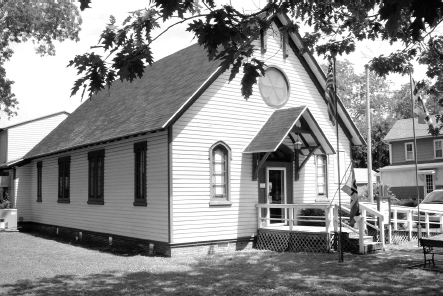
The Julia A. Purnell Museum in Snow Hill. Photo by Michael Morgan.
CHAPTER 1
ROSES, VIOLETS AND LILIES
VERRAZANO SMELLS THE ROSES
Ocean City, Maryland, sits on a broad ribbon of sand that begins with the inlet and stretches northward to Delaware and beyond; it was not always so. The sands of the Maryland coast are constantly in motion as they are buffeted about by the winds and waves. Inlets appear and disappear, and chunks of the beach become islands, only to be reattached to the mainland decades later. Five centuries ago, several inlets led from the Atlantic Ocean to the coastal bays; one of the most important of these waterways was Sinepuxent Inlet. For many years, this inlet cut across the barrier island south of Ocean City, and in 1524, the first European ship, captained by Giovanni da Verrazano, cautiously made its way through the narrow waterway.
Born in Florence, Italy, in the late fifteenth century, Verrazano was only twelve years old when Christopher Columbus made his historic voyage across the Atlantic Ocean. Verrazanos parents were associated with the silk merchants of southern France, and he was sent to France for his education. Buoyed by his familys fortune, Verrazano became a gentleman of some standing in France. After several sea voyages, he had become a competent navigator.
In the early sixteenth century, the overland trade route between Europe and China was threatened by unrest in the area that is now the Middle East. European captains who had honed their navigational skills in the Mediterranean Sea turned to the Atlantic in search of an all-water route to the Orient. In 1524, the king of France commissioned Verrazano to cross the Atlantic in an effort to find a navigable route to China.
The voyages of Columbus had unleashed a flood of expeditions to Central and South America, but only a few probing voyages had been made to the north. Except for the explorations by Ponce de Len in Florida and John Cabot in Newfoundland, North America had been largely ignored. When Verrazano set sail from France in a small sailing ship named La Dauphine, he planned to explore the unknown waters that had been snubbed by less intrepid mariners.
Setting out in the spring of 1524, Verrazano caught the prevailing easterly winds that drove La Dauphine across the Atlantic. After making landfall along the Carolina coast, Verrazano headed north. Given his chance to discover new lands, the eager explorer turned cautious. As an experienced mariner, he feared sailing in waters where the shoals and shallows had not been charted. The great Admiral of the Ocean Sea, Christopher Columbus, had lost the Santa Maria to such shoals near Haiti in 1492. To avoid these hazards, Verrazano followed the practice of a careful captain and kept La Dauphine well away from the beach to ensure that his ship would be in deep water. When he reached the Outer Banks of North Carolina, the explorer remained so far from the coast that he mistook the broad expanse of the Pamlico Sound for the Pacific Ocean.
After he reached the coast of the Delmarva Peninsula, Verrazano may have regained some of the courage that had driven him to become an explorer. Historians debate the exact locations that Verrazano visited on this voyage, but it appears that he entered Chincoteague Bay from the south and sailed northward until he anchored in the vicinity of Sinepuxent Inlet. Assured that the inlet would provide him with a safe route back to the Atlantic Ocean, the explorer anchored La Dauphine a safe distance from shore.
Verrazano and several crewmen boarded a small boat and rowed to the mainland. Like many tourists, the first European to visit the Ocean City area penned a description of his trip to folks back home, which in this case included the king of France: We cameto another land, which appeared very beautiful and full of the largest forests. We approached it, and going ashore with twenty men, we went back from the coast about two leagues, and found that the people had fled and hid themselves in the woods for fear.
The Native Americans whom the Italian explorer encountered were members of one of the Algonquin tribes that lived on the mainland west of the coastal bays. These tribes bore names such as Pocomoke, Chincoteague and Assateague, which have become attached to geographic features of the coastal region. Etymologists have struggled to determine the meanings of these names. Most etymologists believe that Assateague means the place across, but other word specialists render the meaning as the river across; a third school interprets Assateague to mean brown or yellow river.
Next pageFont size:
Interval:
Bookmark:
Similar books «Ocean City»
Look at similar books to Ocean City. We have selected literature similar in name and meaning in the hope of providing readers with more options to find new, interesting, not yet read works.
Discussion, reviews of the book Ocean City and just readers' own opinions. Leave your comments, write what you think about the work, its meaning or the main characters. Specify what exactly you liked and what you didn't like, and why you think so.

